Staring down the length of the wooden tables, golden light gleaming from stringed-bulbs overhead, I delight in the warmth of the barn. A fire is crackling and genuine smiles are shared across the room, along with laughter—so much laughter. A somewhat atypical family, the faces around the table are Belcampo Meat Co.’s Oakland-based team that has gathered for a weekend meeting of the minds. Family dinner is what they call it, as the main course is brought out and we pass our plates down the line where Anya fills them with generous portions of mouth-watering beef stew alongside mezzi paccheri pasta. Since her youth she has loved feeding people and tonight is no exception.
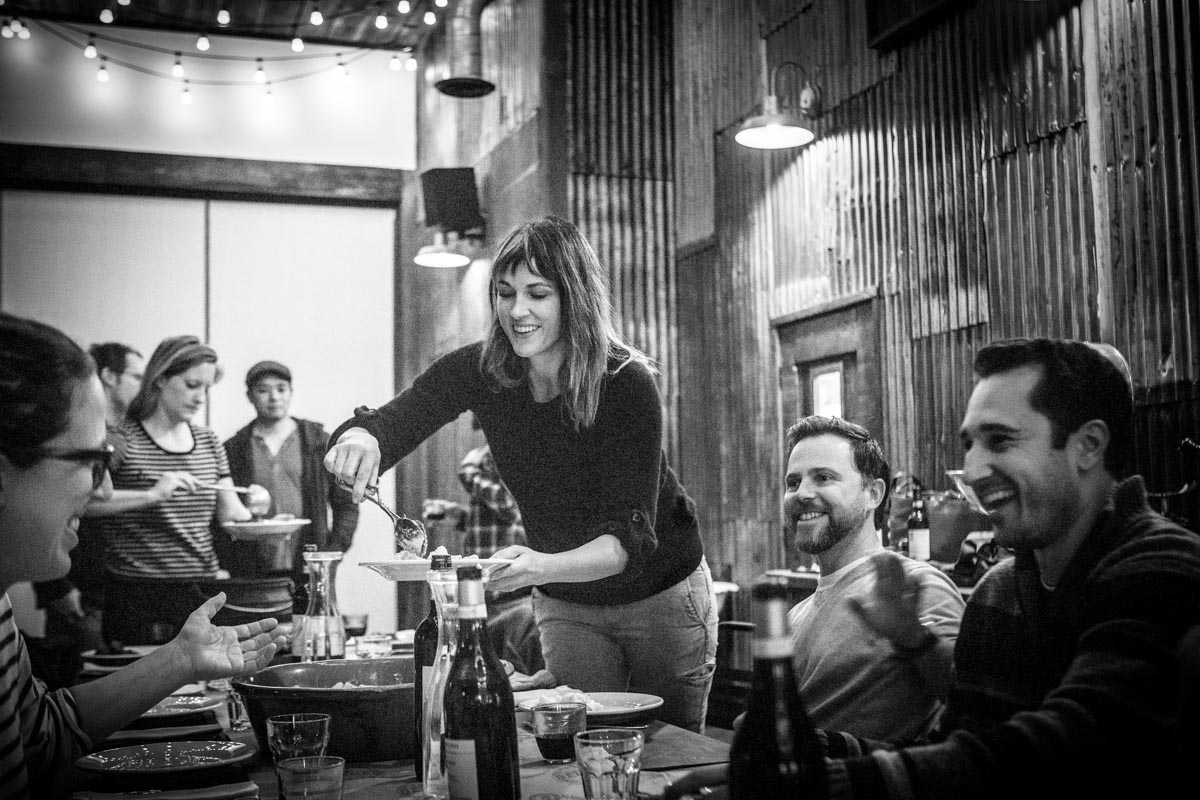
Slow-Food activist Anya Fernald is co-founder and CEO of Belcampo Meat Co., a vertically integrated artisanal meat company that boasts being the only establishment in the U.S. operating on such a large scale with a commitment to humane, ethical raising of animals and organic, sustainable agriculture. The farm consists of 18,000 sprawling acres in Northern California with its own processing facility, and several butcher shop and restaurant locations dispersed throughout California. Gazing out the window at Mt. Shasta, the very mountain that she scaled just a few months ago, Fernald expresses that she is always looking for a new challenge and this process of setting a new precedent for agribusiness nationwide has been just that. Intrigued by her pioneering spirit, I ask what drives her and she responds, “There’s a chance to make a really big mark in an area I’m deeply passionate about: food that tastes better, is healthier, and is socially and environmentally responsible. I know a lot of attempts have been made in this space but… I want it to actually be about whole food and getting people to enjoy the sensual aspect of cutting meat and cooking it for their families, and spending two hours over dinner on a Thursday.”
 |
 |
 |
|
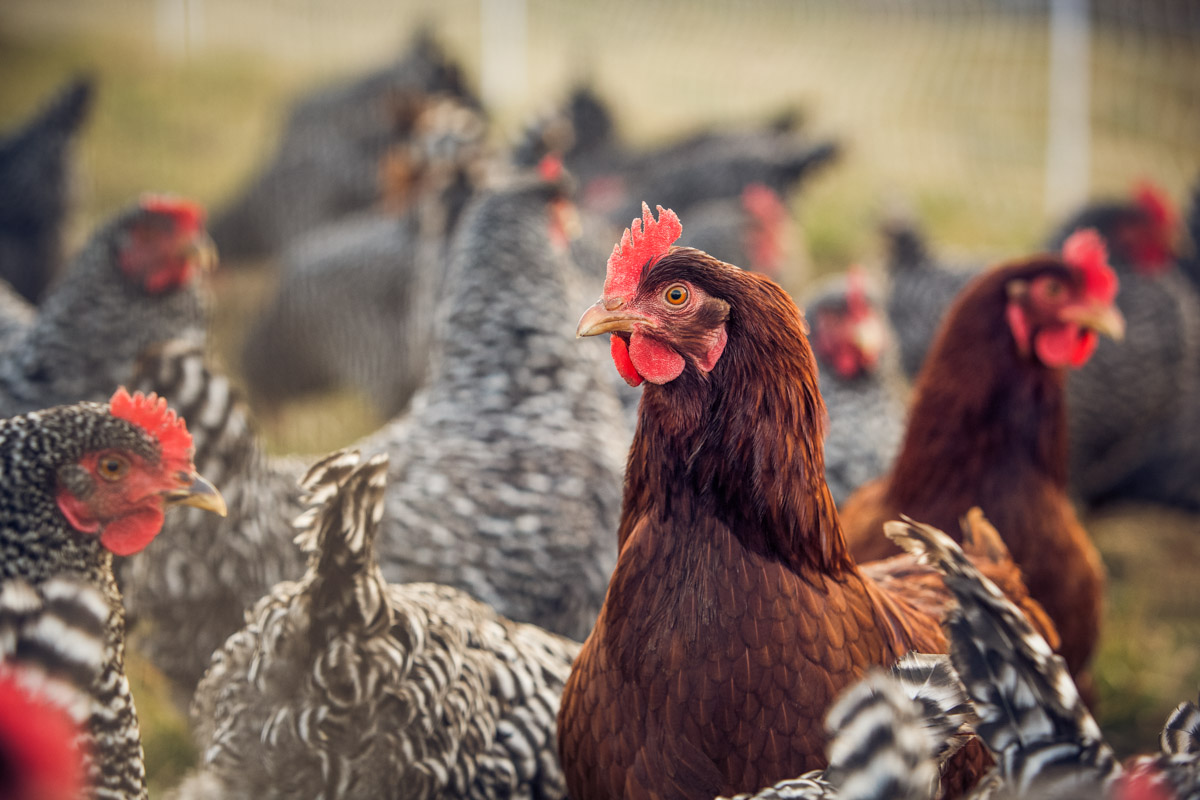 |
|
Belcampo has been well-received in California, and Fernald’s dream doesn’t stop there. She hopes to acquire land on the East Coast as early as this year and replicate the same model. While doing all she can—with a brilliant team—to show the world that sustainable agriculture is possible and profitable, she recognizes that conventional agriculture cannot change overnight.
“My dream is not that people would go out and do vertically integrated meat operations… well at least not right away,” she chuckles aloud, “but that more investments in sustainable agriculture are more strategic in terms of much bigger plays and longer-term investments. You look at the rural infrastructure now and it’s mediocre. If you want a super premium product that’s going to command the type of prices that make this kind of farming affordable, you have to really rebuild that structure.”
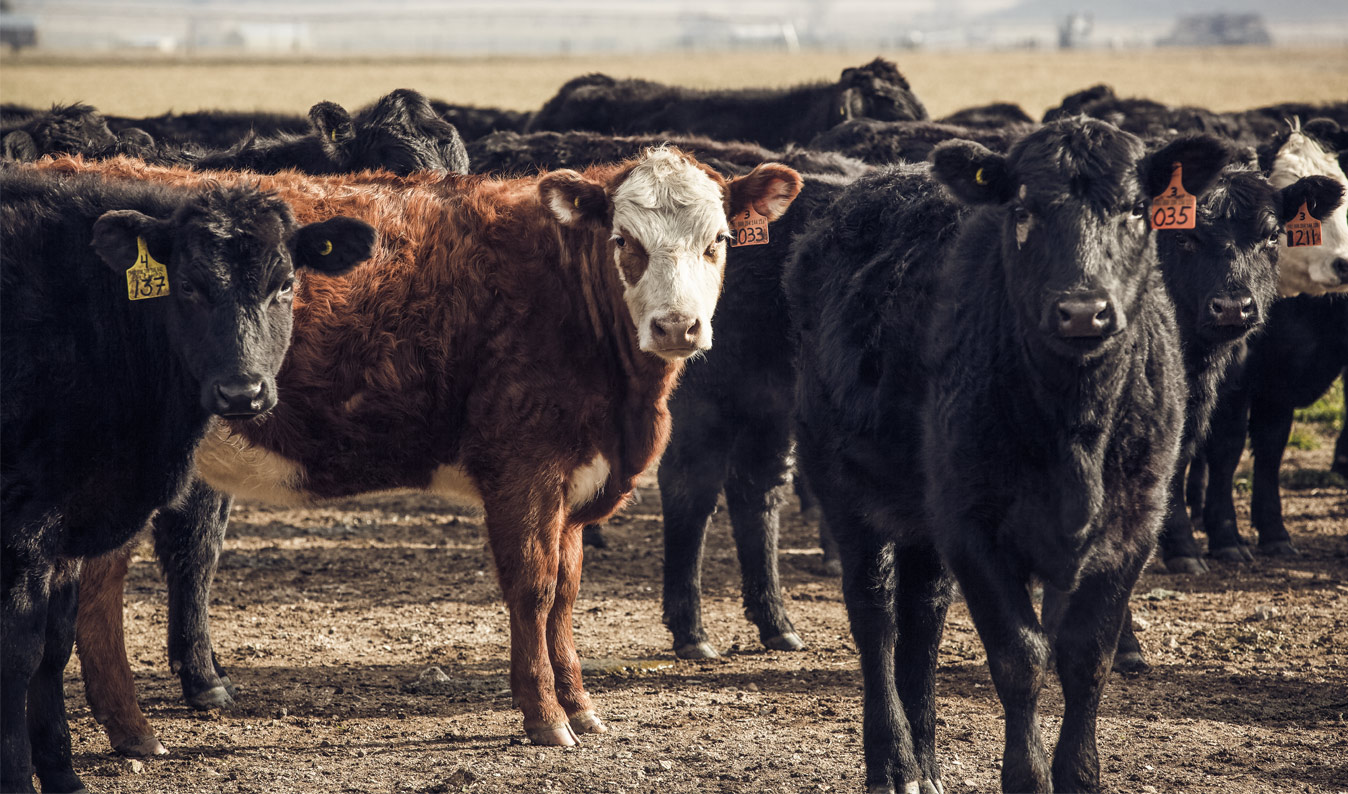
——
Aimee Danch, Pasture Division Director, spends her days with cattle but her eyes never light up quite the same as when she speaks of the value of the grass beneath our feet. She kneels down and digs through the earth, pointing out one layer for each year Belcampo has been working to rehabilitate the land; at the bottom is what they started with, a solid almost impenetrable layer of gravel and depleted dirt. Giddy with delight, she pulls up a handful of this organic matter declaring the benefit of rotational grazing; a method by which the rotating species trample down half of their feed and fertilize it, resulting in rich topsoil. Some call it a costly waste of feed, but Danch maintains, “The health of the soil is directly tied to the health of the plants, health of the animals and therefore our health. So, we basically say we are going to give half of everything we grow to the billions and trillions of organisms living underground that we can’t see and the other half goes to the animals up above.” Pasture is her passion, and her desire is to see a nationwide reversal of the destructive practices that have been perpetuated over the last fifty years. This piece of topsoil dangling from her hand is precious proof that it is possible.
We slowly and confidently make our way toward the grazing cattle knowing that these prey animals are hyper-sensitive to our mood and will mirror our behavior, either calm or otherwise. Danch expounds upon the challenges faced here on a daily basis from rotating ruminants, swine, and poultry, to delivering water to the cattle. One cow can drink twenty gallons in a couple of minutes and, when there are five hundred to one thousand in a group, if there is any hiccup with the delivery they panic. The farm team has to be in constant communication with one another to successfully manage all aspects of the farm and problem solve; an issue with one division affects the rest. With a sigh she admits that holding to this philosophy “is hard work, and requires a lot of flexibility.” There are days when she needs to be reminded of the heart and soul behind her work, to step back and remember why she does what she does. With a countenance of sweet nostalgia she intimates, “Sometimes I’ll come out with these guys in one of the pastures and I’ll just lay down. They will all circle around me and I’ll just listen to them smelling and eating, and they’ll lick my legs and sniff my ears. That’s important. Sometimes it’s nice to just enjoy, it’s nice to do something and not always have a purpose.”
Zigzagging with purposeful steps to a chorus of grunting pigs, Kylan Hoover directs the swine up the field toward the hillside. This is low-stress stockmanship in action, a technique employed by the entire farm. It necessitates a thorough knowledge of each species in order to consistently communicate in a way the animals understand, capitalizing on their natural instincts without causing undue stress or requiring the use of force. Hoover is the Swine Division Director and proves to be a fount of knowledge. An expert swine breeder, he practices continual selective breeding based on strength, farrowing time, flavor, and amount of marbling. By taking advantage of the biodiversity of the prairie and forested hillsides in addition to a complex mix of feed, he ensures the most flavorful meat possible.
“We used to define success as the largest crop,” he asserts, “now we want it to be defined by the tastiest and most sustainable.” Despite his longstanding relationship with many conventional farmers, in order for him to earn a listening ear, he has to prove that this type of farming is actually profitable. In time, as others see increased profit margins, he hopes to be a resource in educating and training them in more humane, progressive methods.
We advance toward the farrowing pens and Hoover makes an introduction: “That pig’s name is Agnes, but she’s also had a numerical code since she was born. If I told you that last time she had twelve pigs and she’s really sweet, or she’s a total shit and she’d eat your lunch if you got close to her pigs, you would remember her. You won’t remember a number, but you’ll remember a pig’s name because you got to know its personality. The human brain has been selected for who knows how long to put names on things, and there’s one or two interesting studies that say farmers are considerably less likely to abuse an animal that has a name versus a number. I mean, just think about all those places where we put numbers on people…”
——
The sun has yet to rise, giving the dense fog full reign over the land as we drive a few miles up the road to the processing facility owned and operated by Belcampo. Looking out the window at the dilapidated town, I understand why some mentioned the community exuberantly embracing Belcampo’s presence here—they are creating much needed jobs. With most of the butchers in the area now hired and trained in Belcampo’s old-world techniques, locals with a mere interest in butchery are now being trained in the craft.
As we enter the plant, the frigid interior penetrates my heavy coat almost immediately while I watch the butchers work furiously around me in the bone-chilling cold. Walking along white walls through sanitized rooms with giant carcasses hanging above, I realize that this is what transparency looks like. My guide states that there are all of three slaughterhouses in America that will actually let you through the front door, yet here I am walking through every step of the process. We enter a temperature and humidity regulated room full of aging meats for salumi, designed to mimic the caves where Massimo Spigaroli makes his world-renowned culatello. Next, we take a look at the pens designed by Temple Grandin, following the winding maze to the knock box where the knocker —using a bolt pistol—performs his duty, followed by a retina check. He touches the eyes of every animal that comes through, monitoring for movement to be sure they have passed on and will feel nothing throughout the remainder of the process. At this, I recall a scene in which a loved one breathes his last and a grieving soul reaches out to close his eyelids. Something in the humanity of it all strikes a chord within me, and I am reminded that the animals here are treated with care from the first hand that strokes them to the last.
——
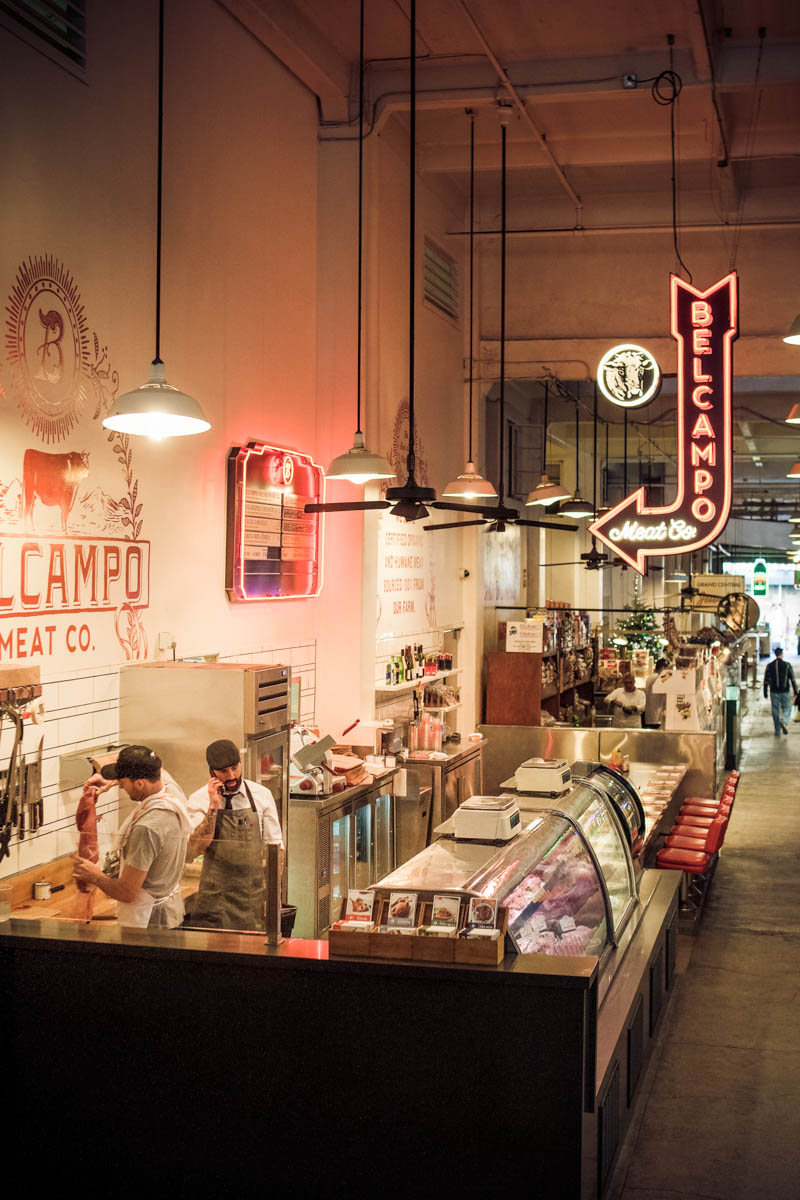 |
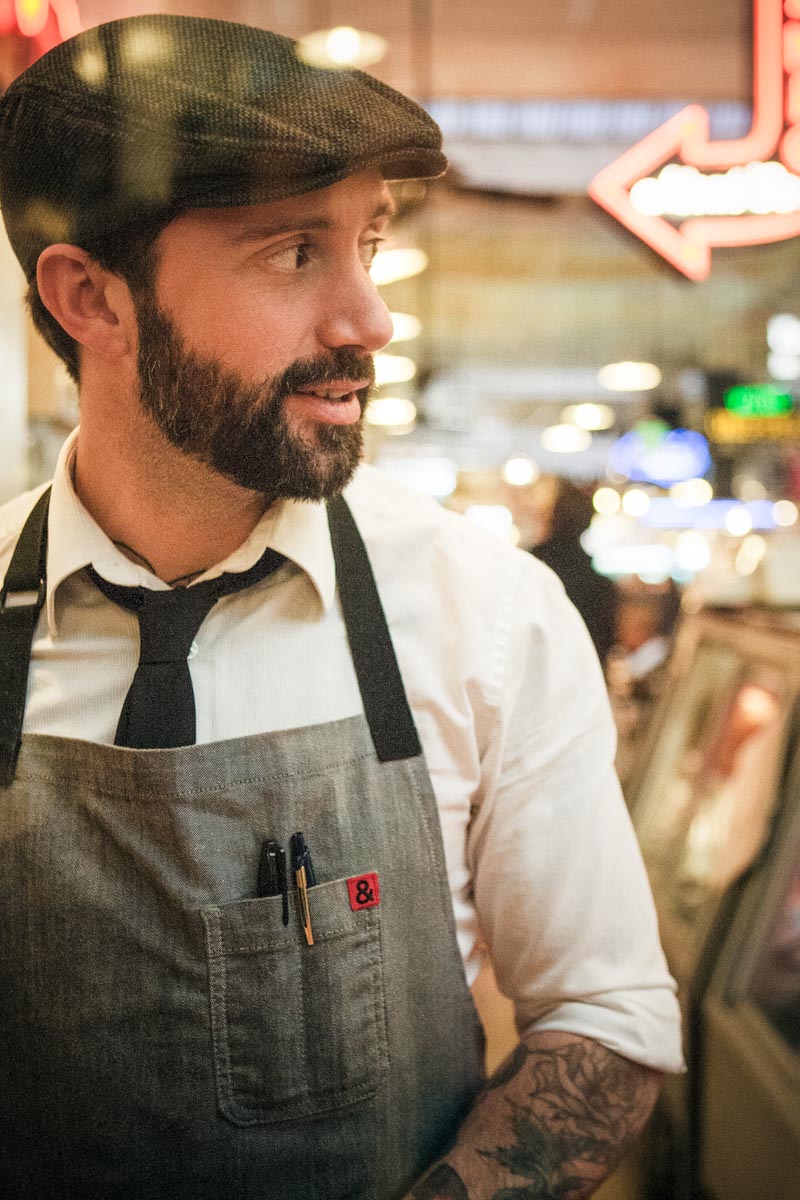 |
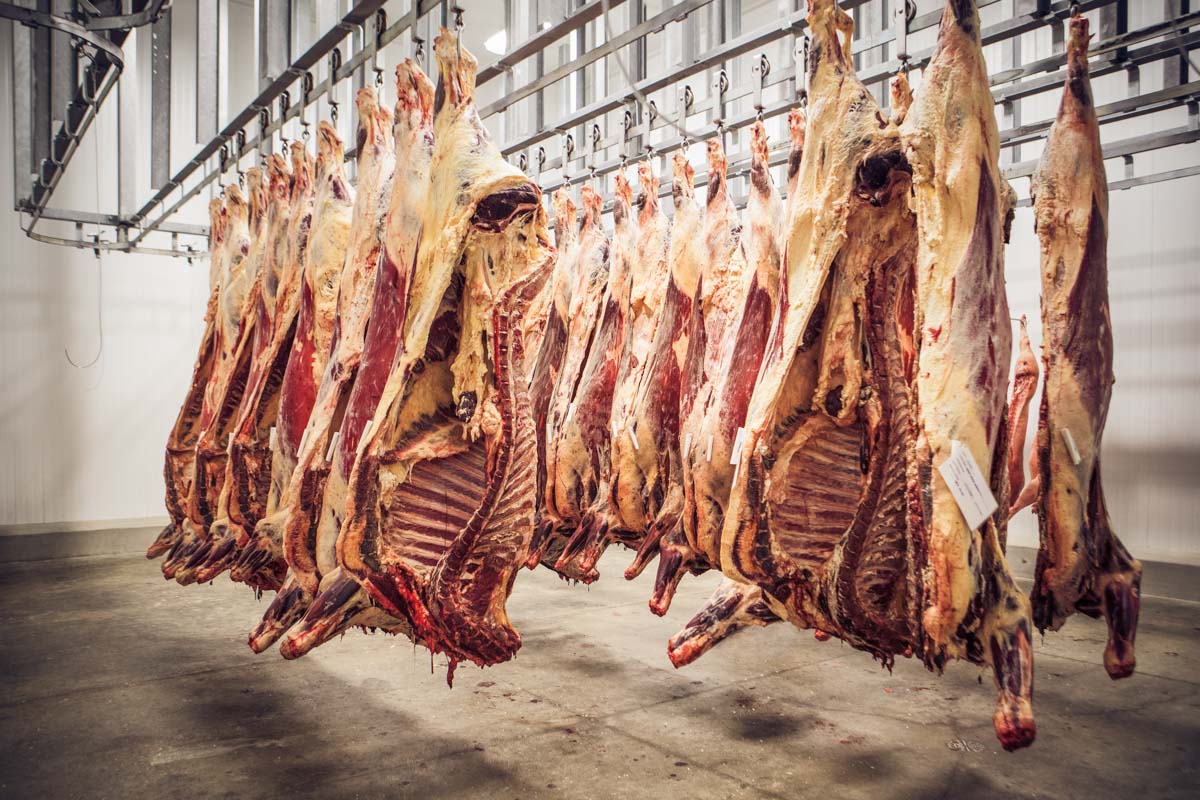 |
|
Strolling through Downtown L.A.’s Grand Central Market, it is impossible to miss Belcampo’s flawless, gleaming surfaces contrasted with nearby antiquated produce stands. The counter is brimming with meats perfectly arranged behind glass, alluring passersby like precious gems. A costly display to be sure, but a worthy investment. The location and design whisper old-world with the butcher counter center-stage and the carving table in full-view, bidding others to watch, learn, and partake. Head Butcher, Jered Standing, plops an entire lamb onto the table and begins sawing with his tool of choice. Some nearby children watch wide-eyed with mouths agape. I study their young faces and perceive a shift in the thinking of the next generation. These children now have a point of reference for asking questions such as: Where did this animal come from? Where is the rest of it? What was its quality of life?
Standing meticulously places the perfectly carved pieces of raw meat onto a platter garnishing them with sprigs of rosemary, while expressing the reason behind such attention to detail, ”I try to make sure everything up front here is perfect. I know all the guys up at the farm and they work really hard. I feel like I’d be doing them a disservice if the meat here on display isn’t looking its best.” I am awestruck yet again by the strong sense of camaraderie that pervades every level of this company. In response to customer requests, the butchers at the counter deconstruct the meaning of a trail of buzzwords used to describe Belcampo, in addition to explaining where unfamiliar cuts are located on the animal and the best way to cook them. Many customers have built a relationship with the butchers and take their recommendations to try a lesser-known cut of meat. The knowledge of the public is increasing, along with the breadth of their palates.
Accomplishing the goal of zero-waste from snout to tail can be a daunting task, but Head Chef Robbie Arnold-Starr sees it as, “…an opportunity to try something new and see if it works.” While the dishes are delectable, some are also outlets for off-cuts or excess amounts of one type of meat. He explains that the impact on the local community is only growing as locals become regulars as well as those who work inside the market. Due to their high standards of ethical raising and humane handling, numerous vegetarians have also begun eating Belcampo’s meat with confidence in their product and practices.
With my visit coming to a close, Arnold-Starr approaches with a wide smile handing me a plate of steak and eggs over creamy polenta, and I grab a seat nearby. First things first, I slice into the seared, perfectly pink steak, its juices streaming over the herbed polenta. Succulent and delicious, it seems to melt in my mouth. I savor the bite, closing my eyes to focus solely on the intermingling of flavors dancing across my palate. The polenta is magnificent and the egg a delight to my eyes. As I take a bite it is unlike any egg I have ever tasted, robust in flavor with a thick and creamy yolk, golden as sun-soaked pastures. This is the taste of sustainability.





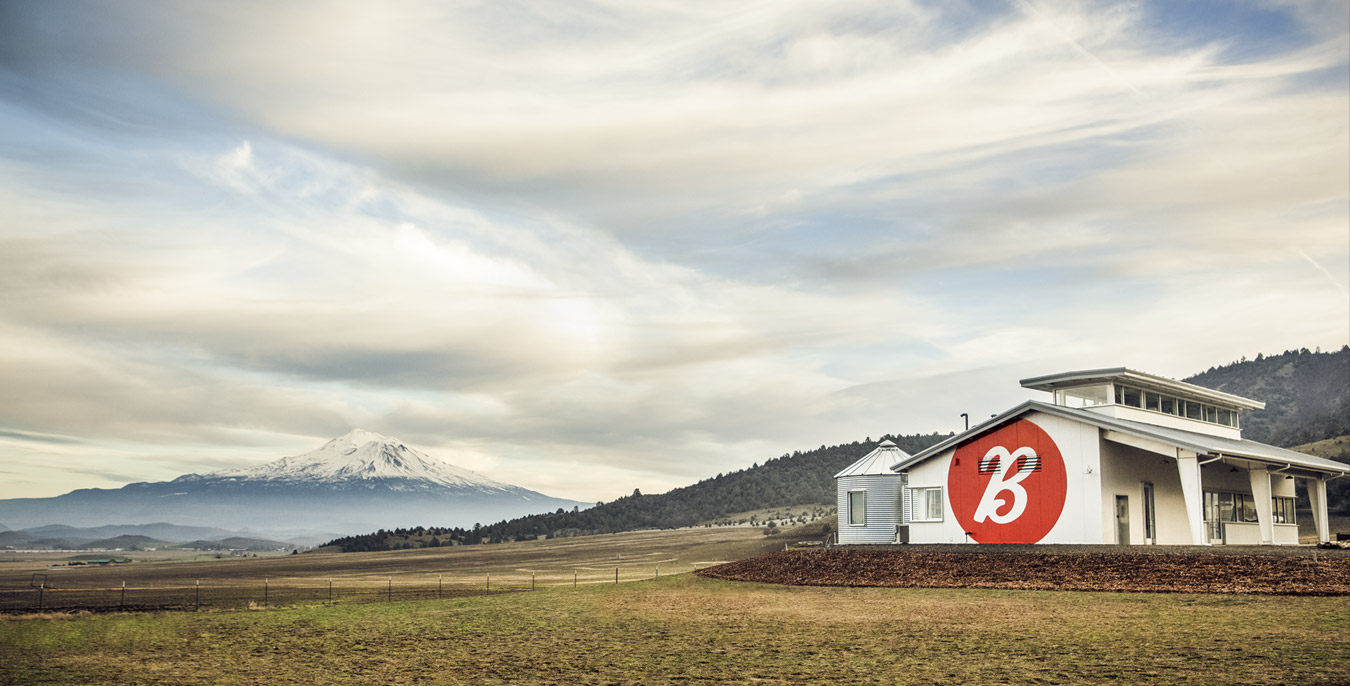

Our comments section is for members only.
Join today to gain exclusive access.